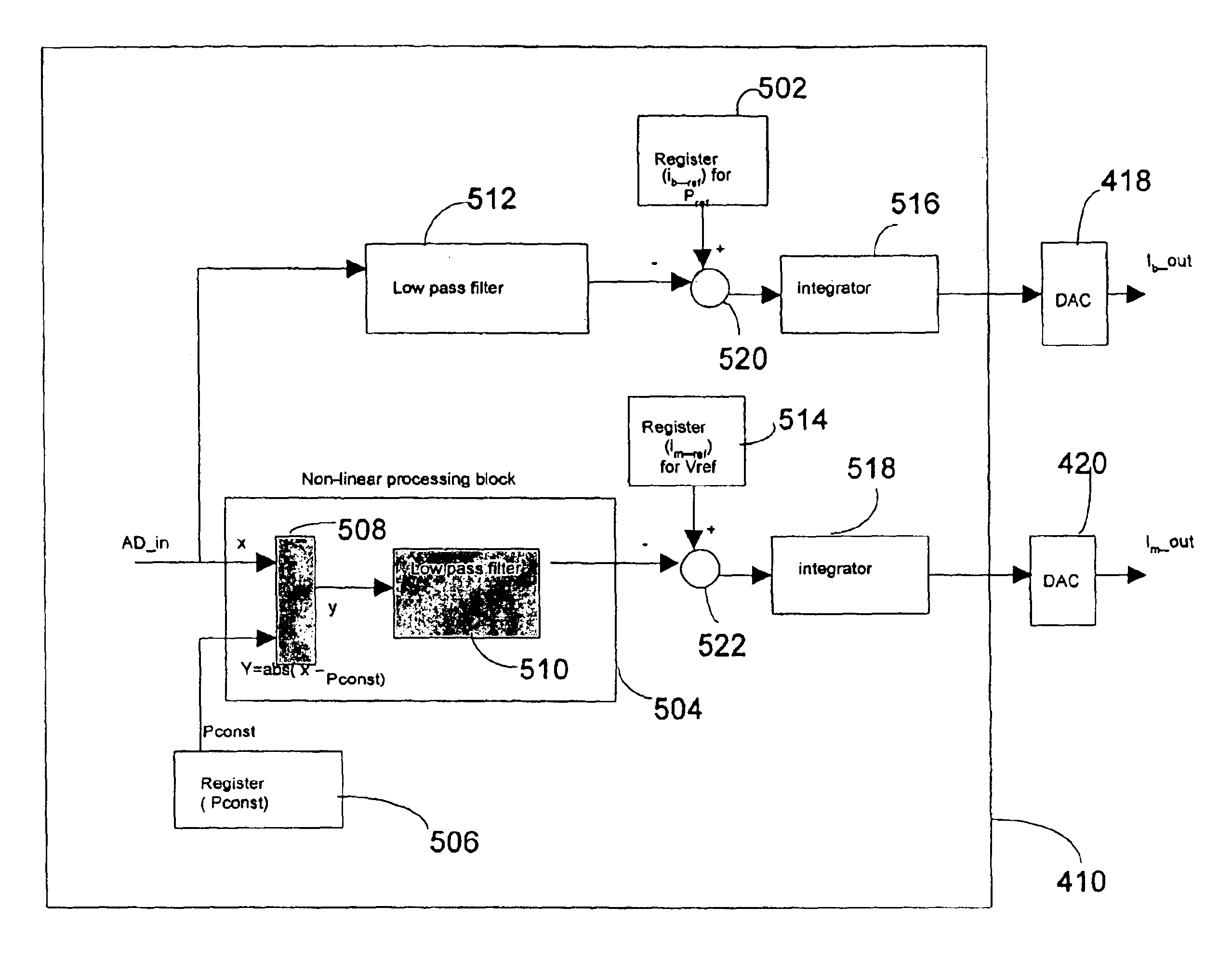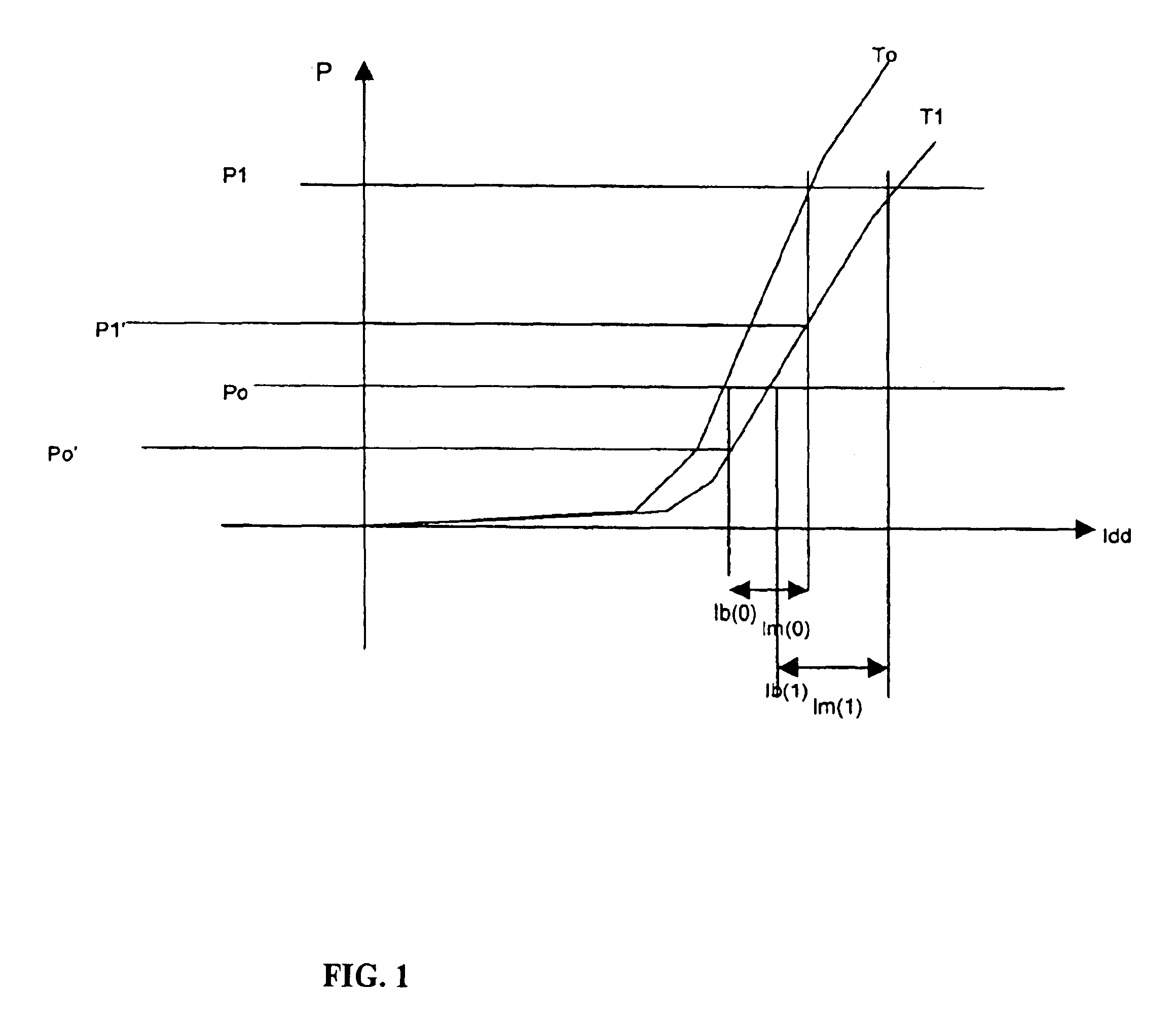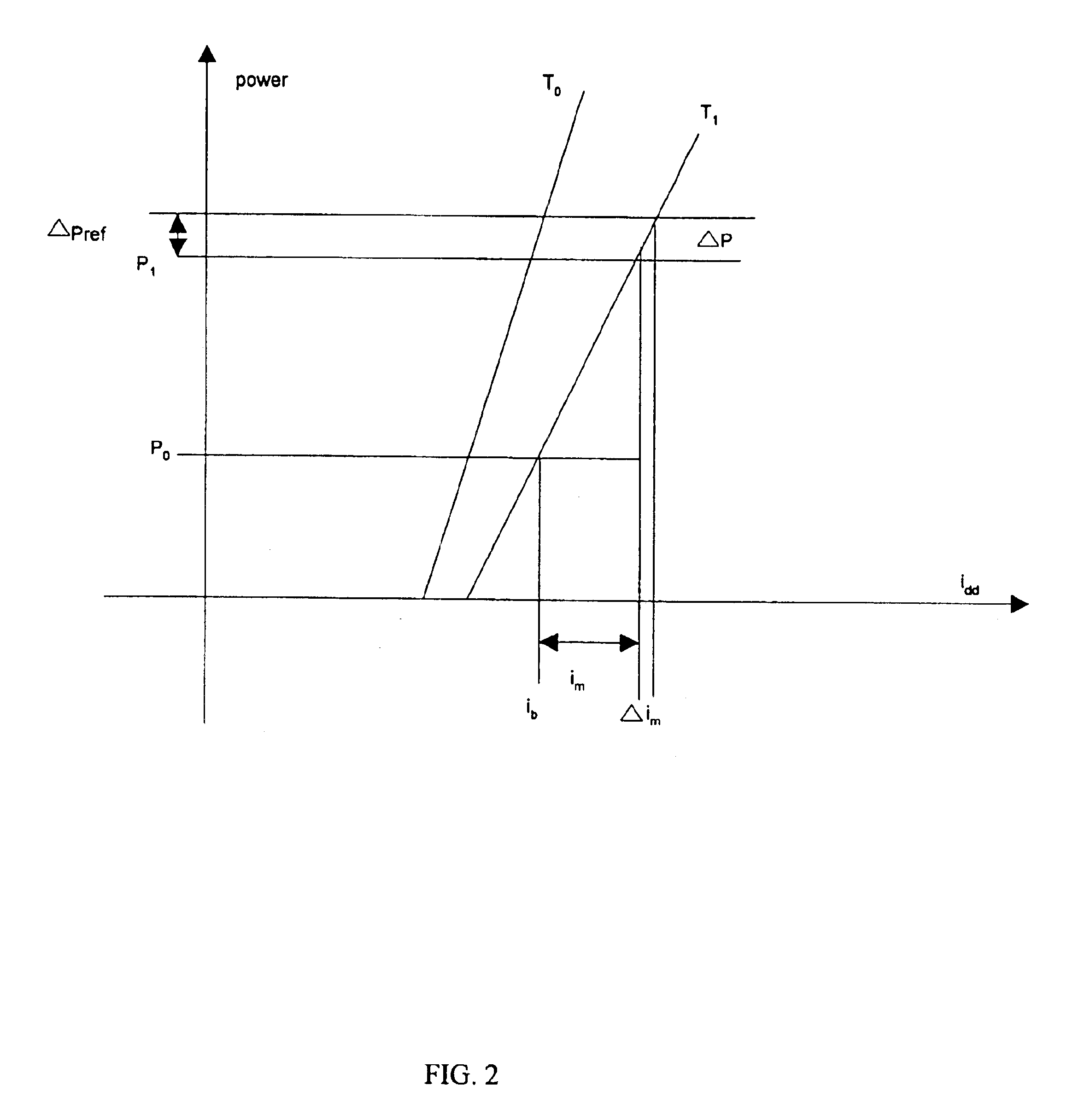Statistic parameterized control loop for compensating power and extinction ratio of a laser diode
a technology of applied in the field of optical transceivers, can solve the problems of reducing the reliability of a digital communication system, increasing the bit error rate (ber) and clock jitter at the receiver end, and increasing the transmission power, so as to minimize the fluctuation of laser output power and extinction ratio.
- Summary
- Abstract
- Description
- Claims
- Application Information
AI Technical Summary
Benefits of technology
Problems solved by technology
Method used
Image
Examples
embodiment 600
[0035]FIG. 6 is a flow diagram illustrating a method 600 for simultaneously adjusting an output power and an extinction ratio of a laser diode based on on a reference average power and a variation from the reference average power in accordance with an embodiment of the present invention. For illustrative purposes only, the method embodiment 600 illustrated in FIG. 6 is discussed in the context of the system embodiment of FIG. 4.
[0036]When the laser diode is powered-on or a recalibration request is received, the laser diode's drive current is calibrated for the desired reference P1 and P0 levels. In one example, these reference P1 and P0 levels can be set according to an average output power and extinction ratio for optimal reception at a receiver (not shown) across a transmission medium. The APC 410 determines 602 the laser diode drive current idd for a reference P1 and a reference P0 level. The APC 410 determines 604 a reference average power and a reference power variance for the ...
embodiment 800
[0059]FIG. 8 is a flow diagram of a method 800 for determining a reference average power Pref and a reference power output variance Vref representative of the reference P1 and P0 levels for the desired extinction ratio P1 / P0 in accordance with an embodiment of the present invention. This method embodiment 800 is typically performed during a parameter estimation phase following the initial calibration phase when the laser diode transmitter 402 is initially powered on.
embodiment 400
[0060]In the example context of the system embodiment 400 illustrated in FIG. 4, using the initial values for ib—out and im—out determined in the calibration phase, a random data input (e.g. 424) is provided to the laser diode drive current generator 422 causing the laser diode 402 to produce an optical power swing from corresponding power levels P0 and P1 over a parameter estimation time period Par_T. The values Pref and Vref are then estimated, and used by the APC 410 for adjusting parameters such as the laser diode drive current idd effecting the laser optical power extinction ratio and average power level to maintain the desired level in an extinction ratio and power level compensation phase. Particularly for a laser diode 402 used as a transmitter, the extinction ratio and power level are monitored continuously during normal transmitter operation and parameters are adjusted responsive to the monitored feedback.
[0061]The APC 410 initializes 802 parameters for the power parameter...
PUM
 Login to View More
Login to View More Abstract
Description
Claims
Application Information
 Login to View More
Login to View More - R&D
- Intellectual Property
- Life Sciences
- Materials
- Tech Scout
- Unparalleled Data Quality
- Higher Quality Content
- 60% Fewer Hallucinations
Browse by: Latest US Patents, China's latest patents, Technical Efficacy Thesaurus, Application Domain, Technology Topic, Popular Technical Reports.
© 2025 PatSnap. All rights reserved.Legal|Privacy policy|Modern Slavery Act Transparency Statement|Sitemap|About US| Contact US: help@patsnap.com



